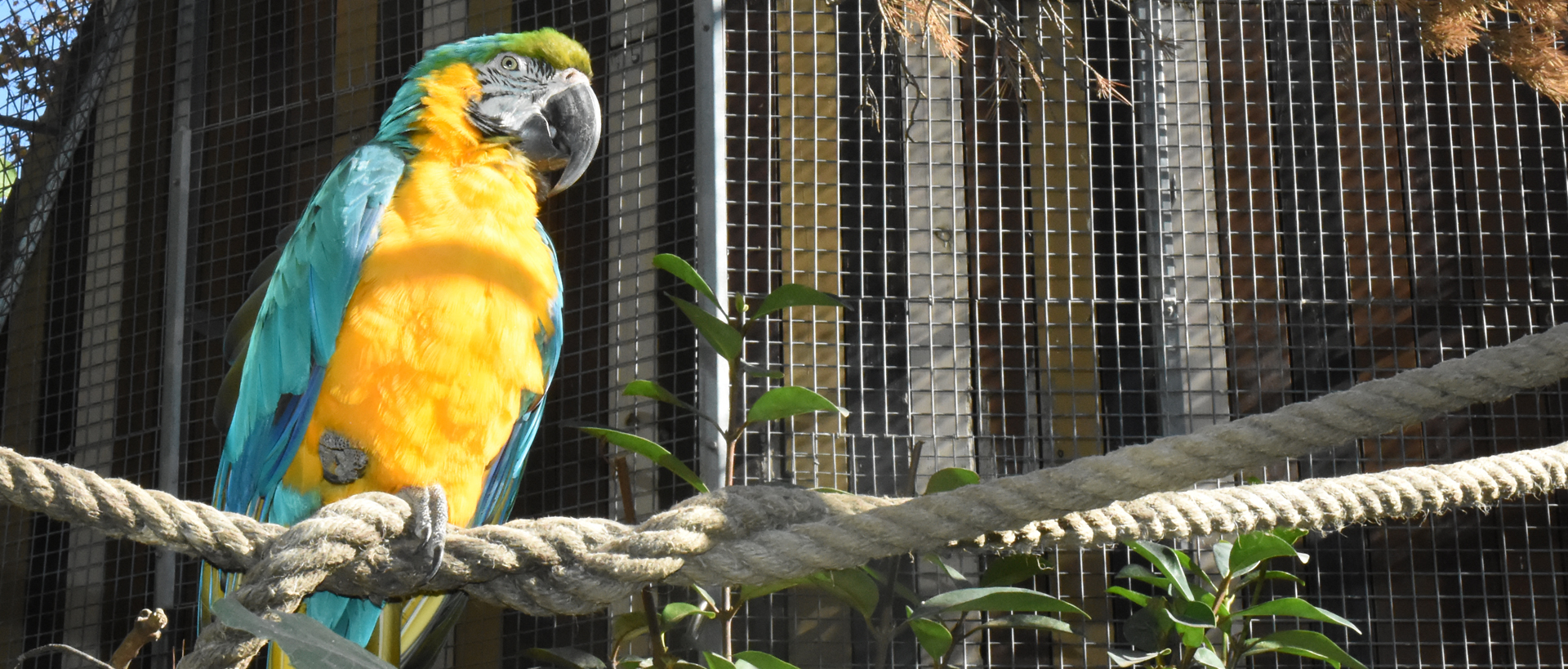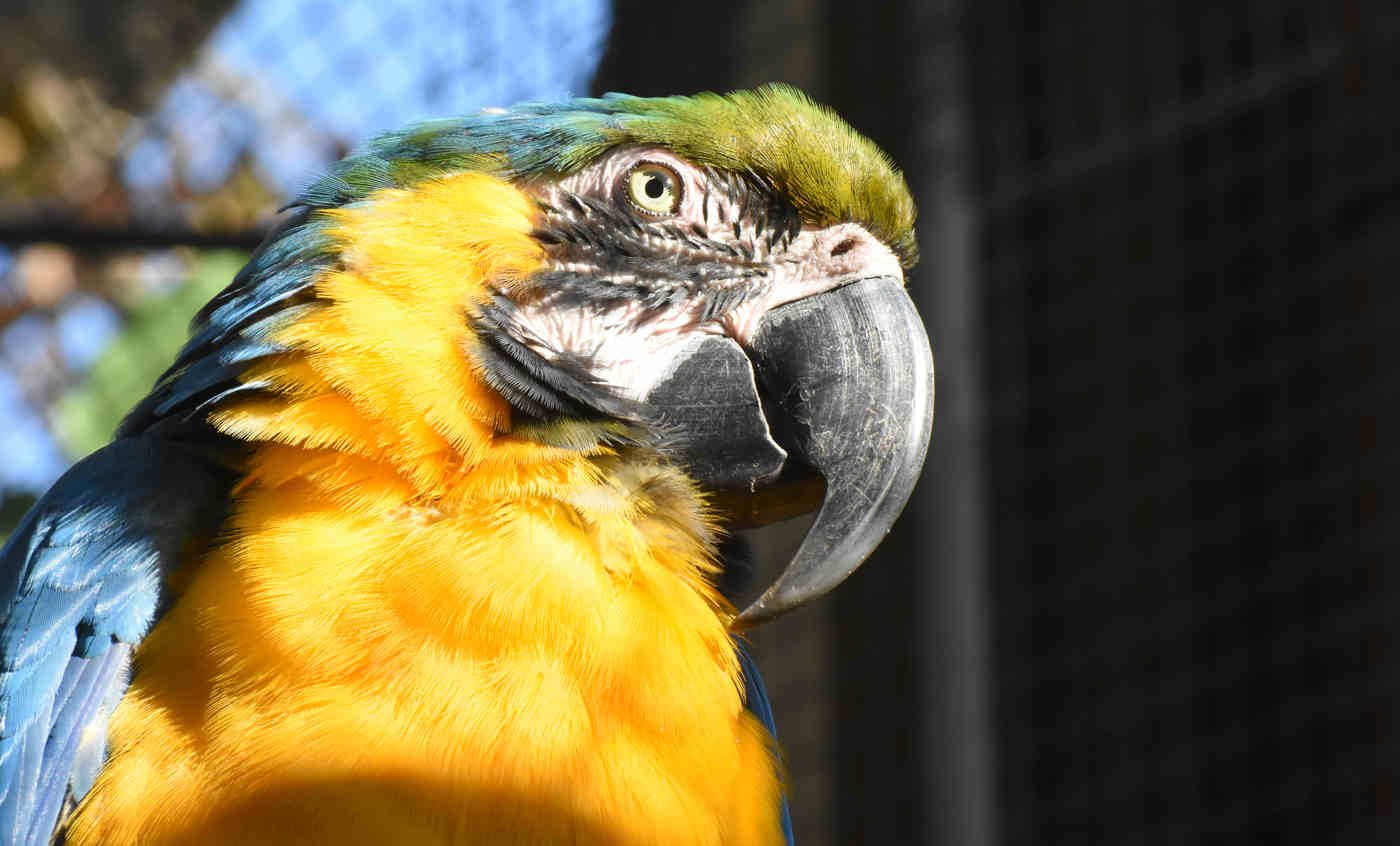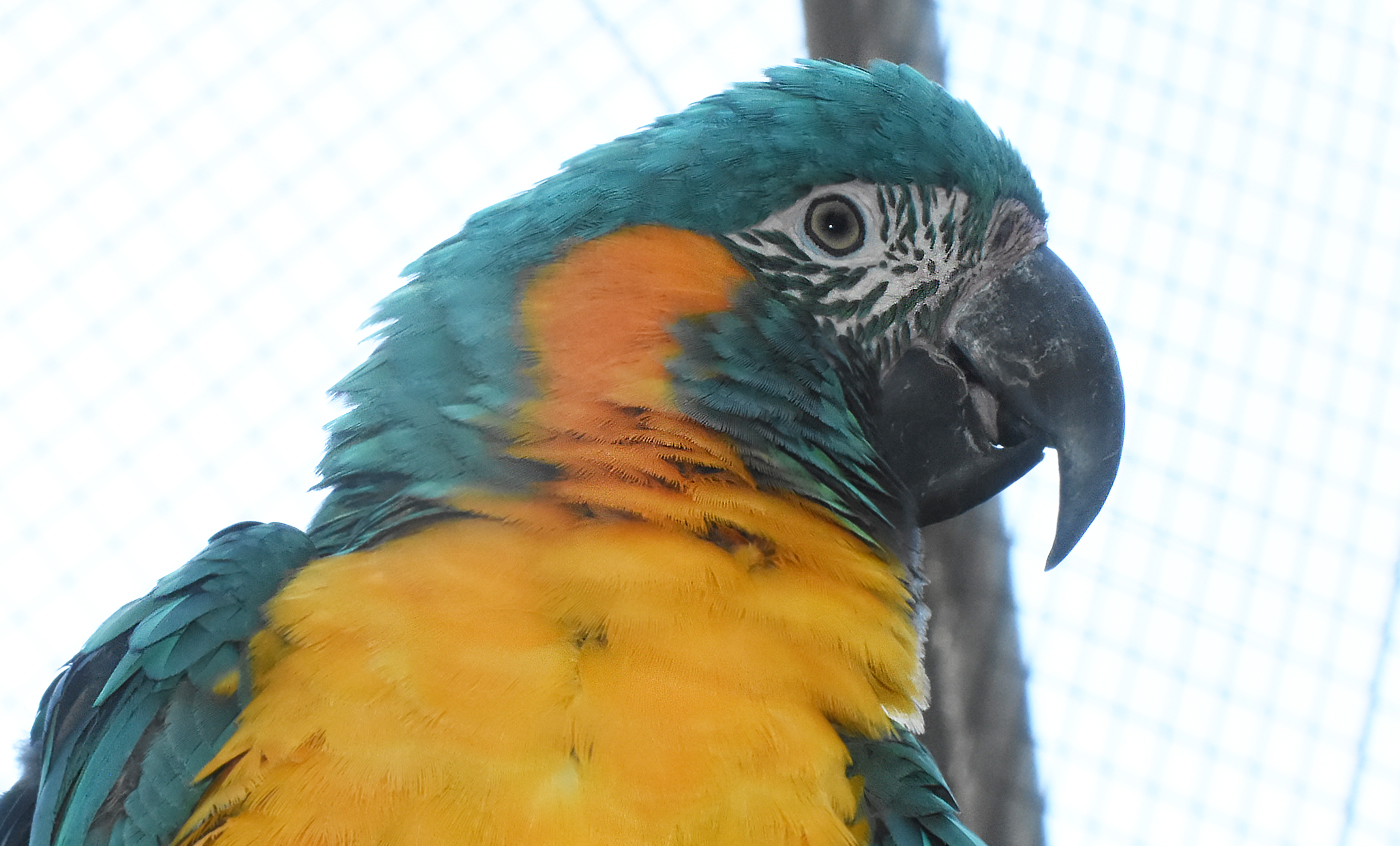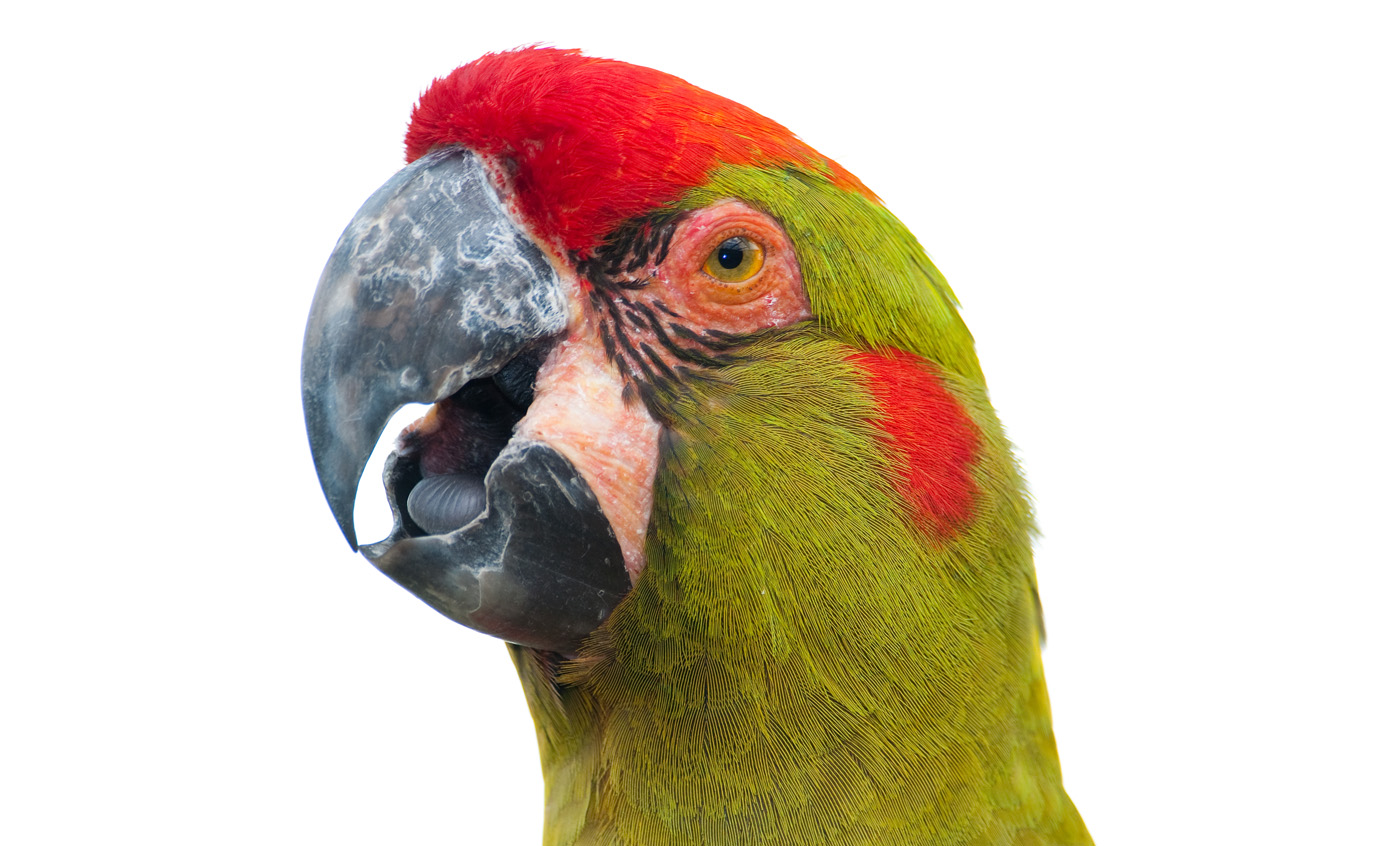Blue-and-yellow macaw
The blue-and-yellow macaw is a native of rainforests and marshlands from the east of Panama and the island of Trinidad down to Paraguay and southern Brazil.
These days, it is only common in the remoter regions of its range of distribution, having disappeared or almost disappeared, from the more accessible areas. It feeds on seeds and fruit.
Natural habit
From the east of Panama and Trinidad south to Paraguay and Brazil.
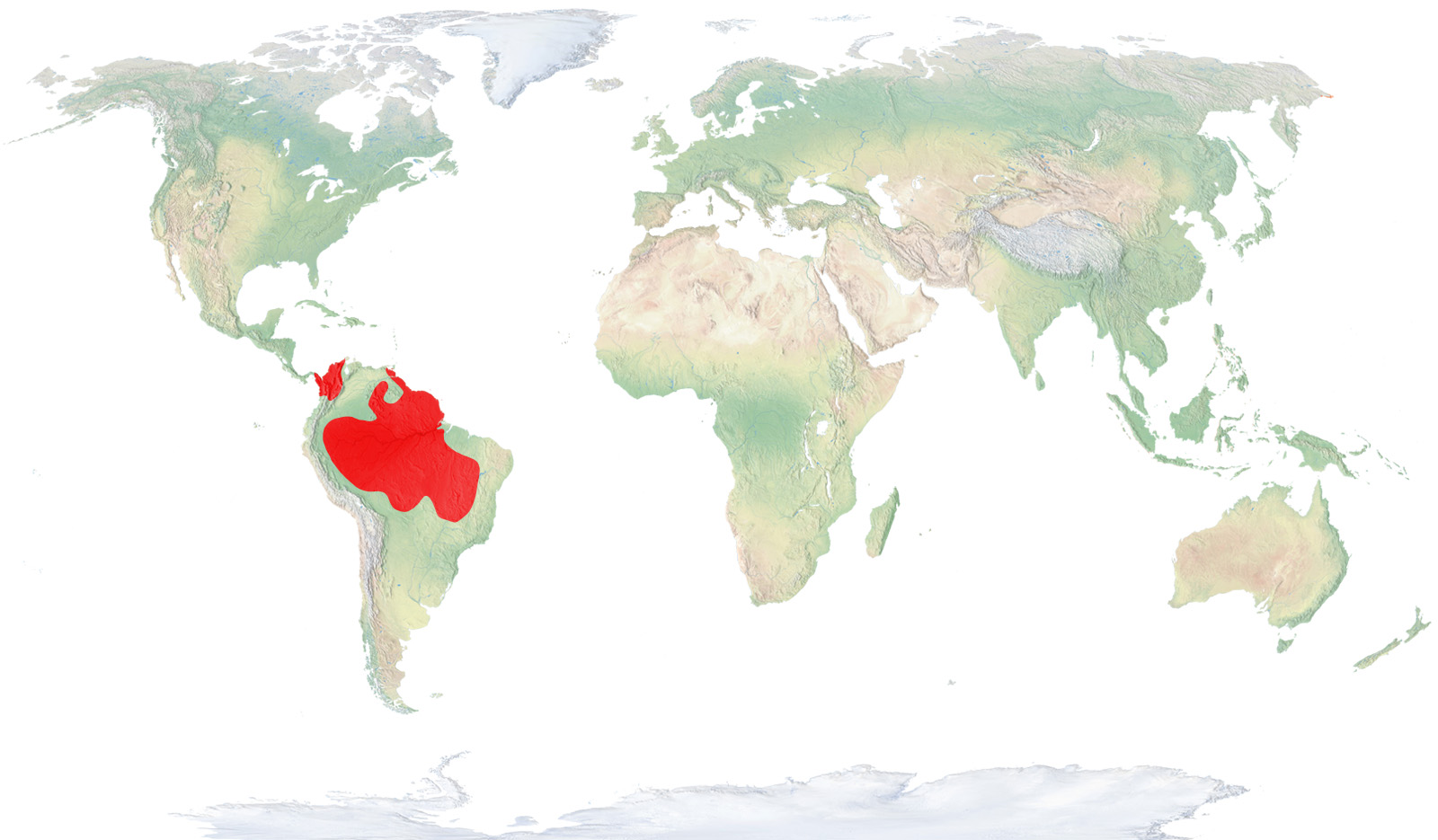
- Distribution / Resident
- Breeding
- Wintering
- Subspecies
Risk level
- Extint
- Extint in the wild
- Critically endangered
- In Danger
- Vulnerable
- Near threatened
- Minor concern
- Insufficient data
- Not evaluated
Taxonomy
Physical characteristics
Biology
Reproduction
Biology
The blue-and-yellow macaw is a bird that can measure up to 85 cm long, from the Psittacidae family. It is characterised by its blue plumage all over, except for the yellow breast and neck, white cheeks and face, black throat and greenish forehead. It is a quite large and robust bird, even though its extremely long tail gives it a more graceful appearance than it really has.
The blue-and-yellow macaw is a typical inhabitant of rainforests and other types of drier forests in South America, from east Panama to the island of Trinidad and to Paraguay and southern Brazil.
It has a frugivorous and granivorous diet: they eat grain, seeds, nuts and different types of fresh fruits.
Sexual maturity takes place at four or five years of age. They are monogamous and most couples stay together for many years, often for their entire lives. They make nests in holes in trees and, more rarely, holes in rocks. They tend to lay from one to three eggs.
With gregarious habits, they tend to join up in large flocks and even form mixed groups with macaws from other species. However, they are not considered a migratory bird, even though some populations can make nomadic movements looking for food, especially during the wet season.
The blue-and-yellow macaw is highly valued as a caged bird. The excessive capture they are subjected to is why they have disappeared from many areas of their former distribution area.



